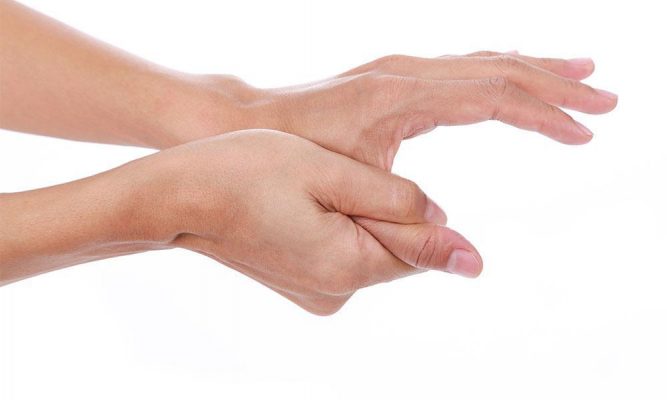No products in the cart.
Pain, Pain Management
Trigger Finger
What is Trigger Finger?
This condition is also known as “Stenosing Tenosynovitis” .Trigger Finger causes pain, stiffness, a sensation of locking and catching to the fingers and thumb when you bend and straighten them. It can affect one or more fingers in either hand. It is called trigger thumb when it affects the thumb.
Who are at risk of Trigger Finger?
Trigger Finger can be commonly found among people who go through strenuous repetitive motions in their day to day activities. Specifically in the area of the hands, such as the action of gripping, grasping and pinching. Other strenuous and/or repetitive forms of finger/thumb motion can also cause Trigger Finger.
Some of these people may include:
- People ages 40 to 60
- People who have the condition: Diabetes, Rheumatoid Arthritis, Gout and Osteoarthritis.
- It is more common in women than men.
- Industrial workers
- Musicians
- Climbers
Let us identify the symptoms. Identifying the symptoms of any condition is always the first step to recovery.
Symptoms of Trigger Finger:
Pain:
This pain is usually felt at the base of the fingers where the joint connects with the palm. The pain can be usually felt during a motion of gripping. When at rest, the pain might not be felt. If there is an increased production of fluid over time at the tendon sheath. There will be a build up of pressure therefore causing pain even without any use of hands.
Swelling:
Over time there may be a development of a lump. This may be caused by nodular swelling within the tendon. A development of a fluid filled cyst is also possible. The swelling is usually found at the A1 pulley. Which is at the opening of the tendon sheath.

Stiffness:
Stiffness or a loss of motion may be caused by Trigger Finger. You may test this by bending your finger as much as you can towards the palm of your hand. And then seeing how far of a gap is between your fingers and your palm. This is common in Chronic or untreated fingers. The experienced pain may be caused by the compression of the fluid. Trigger finger may also prevent the straightening of the finger. Pain may be experienced when attempting to straighten it. When a joint is not straightened over a period of time of a few weeks. A ligament known as a volar plate becomes shortened therefore limiting motion.
Abnormal Sensations:
People will experience at least one of these abnormal sensations. Popping, catching or locking. They sometimes occur when one bends or straightens their fingers. These symptoms may be mildly painful, but as the tendon and pulley interaction becomes tighter, the pain may increase.
Preventive Measures:
- Avoid repetitive grasping or gripping motions
- Avoid prolong use of vibrating hand-held machinery
- Use proper hand equipment for the job
- Ice therapy: Applying an icepack to the fingers and hands can help reduce inflammation and ease the pain.
- Stretching your joints out will help improve range of motion and flexibility. It also helps reduce unnecessary tension, lowering risk for trigger finger.
- Allowing your hands and fingers to rest.
THERAPY PROGRAMS FOR TRIGGER FINGER:

- A clinically advanced non-invasive equipment This intervention helps patients with pain by reducing joint inflammations. Improving muscle imbalances and creating healthy circulations for your joints. It also helps loosen scarred tissue from chronic muscular conditions as well as other pain conditions.
CALL US FOR INQUIRIES: 6223-7170

